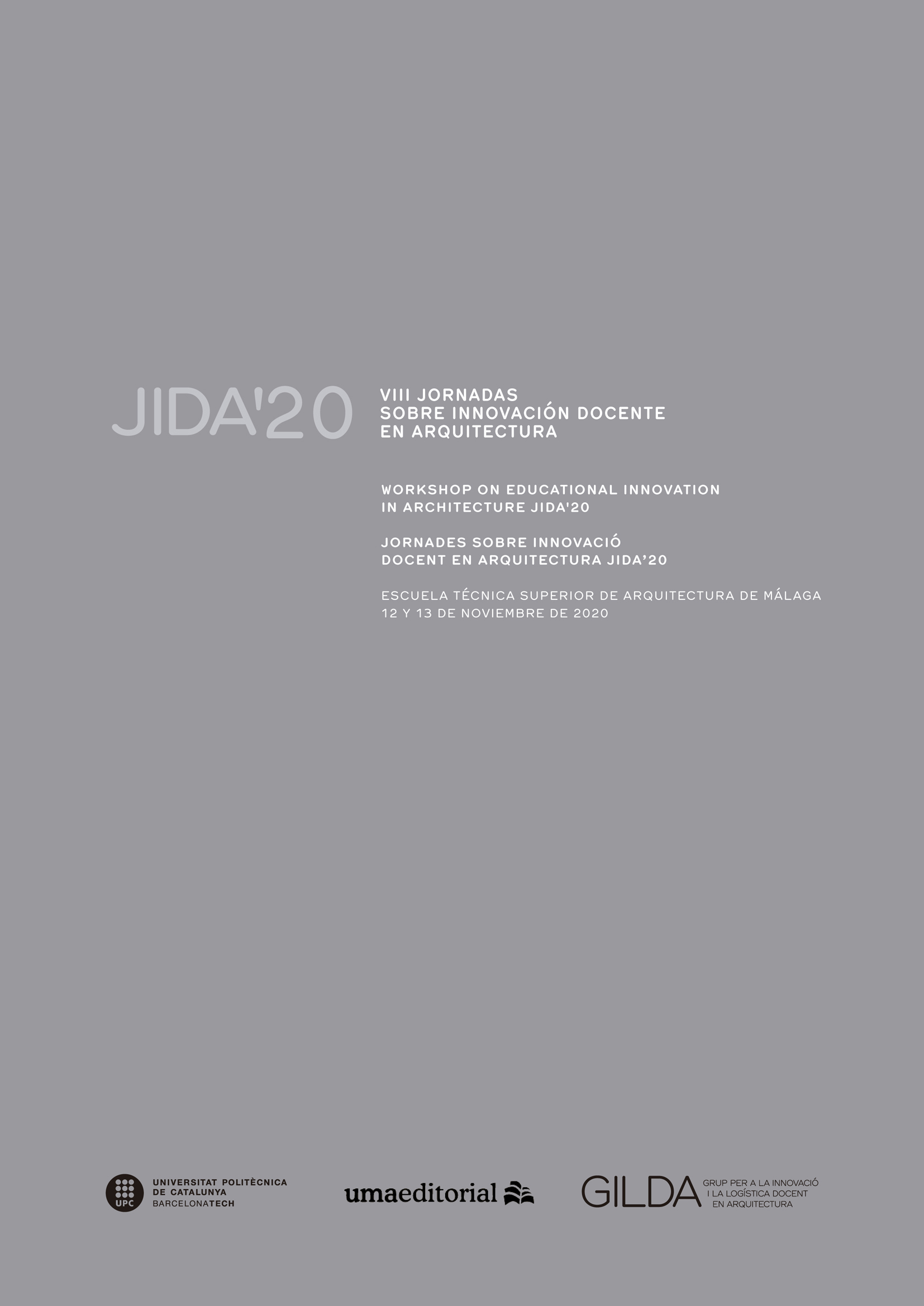Formaciones Feedback. Tres proyectos con materiales granulares manipulados robóticamente
DOI:
https://doi.org/10.5821/jida.2020.9312Resumen
En esta sección se presentan tres diferentes propuestas sobre fabricación robótica como procesos de diseño dinámico, estudiando la relación entre diseño computacional, fabricación digital y sistemas de materiales complejos en diferentes formatos de enseñanza dentro del departamento de arquitectura de la ETH de Zúrich. Todos estos proyectos exploran el control en la formación de material a través de herramientas digitales, generando un entorno educativo que permite al diseñador interactuar de forma directa y desarrollar un entendimiento intuitivo de los procesos matéricos en cuestión, sugiriendo un enfoque novedoso que vincula el control digital con técnicas de construcción reversibles.
Citas
Digital references
AEJMELAEUS-LINDSTRÖM, P., RUSENOVA, G., MIRJAN, A., MEDINA, J., GRAMAZIO F., & KOHLER, M. (2020), Rock Print Pavilion: Robotically fabricating architecture from rock and string. Constr Robot 4, 97–113 < https://doi.org/10.1007/s41693-020-00027-8>
HURKXKENS, I., BERNHARD, M. (2019). Computational Terrain Modeling with Distance Functions for Large Scale Landscape Design. In: Buhmann, E., Ervin, S., Helh-Lange, S., Palmer, J. (Eds.), Journal of Digital Landscape Architecture, 4-2019, Wichmann Verlag, Berlin. <https://gispoint.de/fileadmin/user_upload/paper_gis_open/DLA_2019/537663024.pdf>
JUD, D., HOTTIGER, G., LEEMANN, P. & HUTTER, M. (2017), Planning and control for Autonomous Excavation. IEEE Robotics and Automation Letters, 4 (2), 2151-2158. <https://www.research-collection.ethz.ch/handle/20.500.11850/172404>
Web page
THE DIGITAL IN ARCHITECTURE. Online platform for course teaching materials (ITA Elective). <https://gramaziokohler.github.io/teaching_materials/> [Consult: August 4th 2020]
ROBOTIC LANDSCAPES III - DESIGN STUDIO HS2019. Chair of Landscape Architecture, ETHZ. <https://girot.arch.ethz.ch/courses/design-studios/design-studio-hs2019-robotic-landscapes-iii-2> [Consult: August 6th 2020]
ITA ELECTIVE COURSE - THE DIGITAL IN ARCHITECTURE II. Gramazio Kohler Research, ETHZ. <https://gramaziokohler.arch.ethz.ch/web/e/lehre/401.html> [Consult: August 6th 2020]
Videos
GRAMAZIO KOHLER RESEARCH. Vimeo <https://vimeo.com/user14316338> [Consult: August 4th 2020]
ROBOTIC LANDSCAPES III (Simulation). Chair of Landscape Architecture. Vimeo < https://vimeo.com/387934699> [Consult: August 4th 2020]
ROBOTIC LANDSCAPES III (Student work). Chair of Landscape Architecture. Vimeo < https://vimeo.com/387930860> [Consult: August 4th 2020]






















